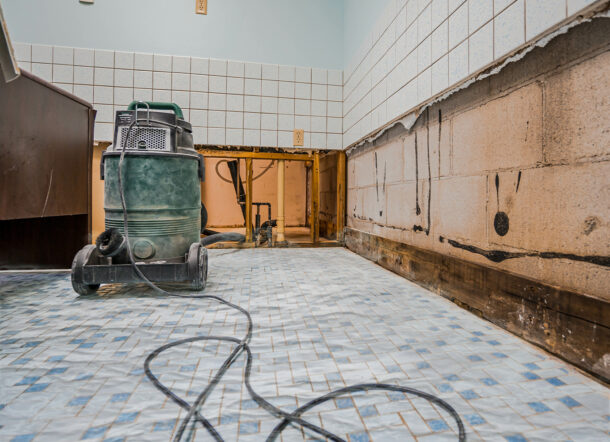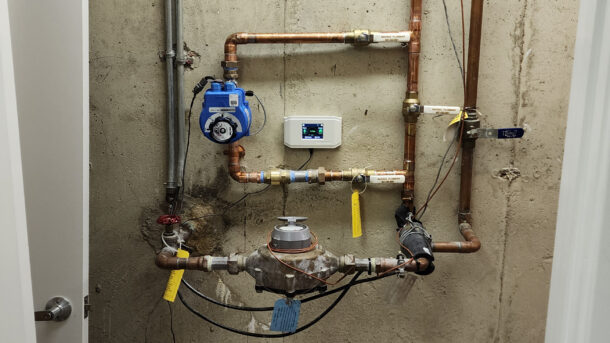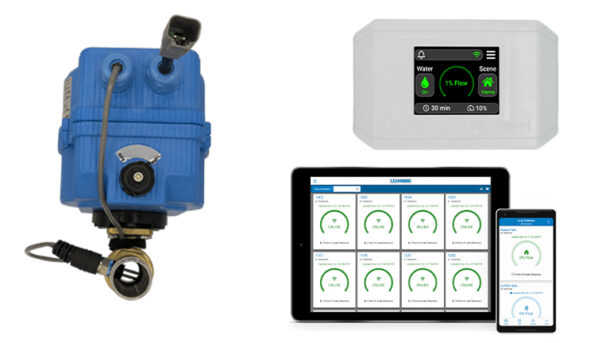In the construction industry, maintaining strict timelines and budgets is essential for project success. However, water damage is a pervasive threat that can derail even the most carefully planned projects. Reports indicate that water damage accounts for up to 30% of all construction site losses, with repair costs ranging from a few thousand to several hundred thousand dollars. The impact of water damage is not limited to direct repair costs; it can also double project timelines, leading to delays, logistical complications, and significant financial losses stemming from contract penalties.

Construction sites are particularly vulnerable to water damage. During the early stages of a build, pipes, fittings, and water systems are often installed and tested before full protective infrastructure is in place. A single leak, if left undetected, can flood work areas, destroy materials, and compromise the structural integrity of the build. This can result in delays, escalating costs, and frustrated clients.
Even more challenging is the fact that water leaks can occur at any time, even outside of regular working hours, after personnel have gone home. A pipe that bursts overnight or a fitting that fails over the weekend can cause extensive damage before anyone is even aware of an issue. Traditional methods of water leak detection, like manual inspections or waiting for visible signs of damage, aren’t thorough enough to protect job sites.
Solution: BuildAlert™ Protects Your Jobsite from Water Damage
BuildAlert™ by Leak Defense is a comprehensive solution designed to safeguard construction projects from the devastating effects of water damage. Providing 24/7 monitoring and control, this advanced system ensures that even the smallest leaks are detected and addressed before they can cause significant damage.
BuildAlert empowers construction personnel to remotely monitor water activity on any job site where it is installed. The system is equipped with state-of-the-art sensors that detect anomalies in water flow, pressure, or usage. When an issue arises—whether it’s a slow leak or a sudden burst—BuildAlert immediately notifies designated personnel via mobile alerts.

Recognizing that alerting personnel is not enough to prevent major damage, BuildAlert takes protection a step further. The system can be configured to automatically shut off the water supply if a leak is detected, effectively stopping water damage in its tracks. This feature allows staff to leave the job site with the confidence that it is protected around the clock.
BuildAlert’s suite of features is designed specifically for the unique challenges of construction environments. It includes:
- 24/7 Monitoring and Protection: Continuous surveillance of a job site’s water systems, alerting staff to any potential issues at any time.
- Automatic Water Shutoff: Ability to automatically close the valve and shut off the water supply in the event of a leak, preventing extensive water damage.
- Remote Accessibility and Control: Monitor and control the water supply from any location via PC or mobile app.
- Construction Site-specific Design: Compact, rugged, easy to install, and simple to use, tailored for the challenges of construction sites.
- Cost Savings: A small investment compared to the potential expenses associated with water damage, delays, and material replacement. The system often pays for itself by preventing a single incident.

BuildAlert also enhances operational efficiency and security by allowing users to schedule automatic scene and mode changes. The system also maintains consistent job site water pressure and offers an optional API for integration with building management systems (BMS).
In an industry where margins are tight and timelines are crucial, BuildAlert by Leak Defense provides contractors, project managers, and property owners with the sense of security that comes with knowing their projects are protected against one of the most common and costly threats to construction sites.




Join the conversation: